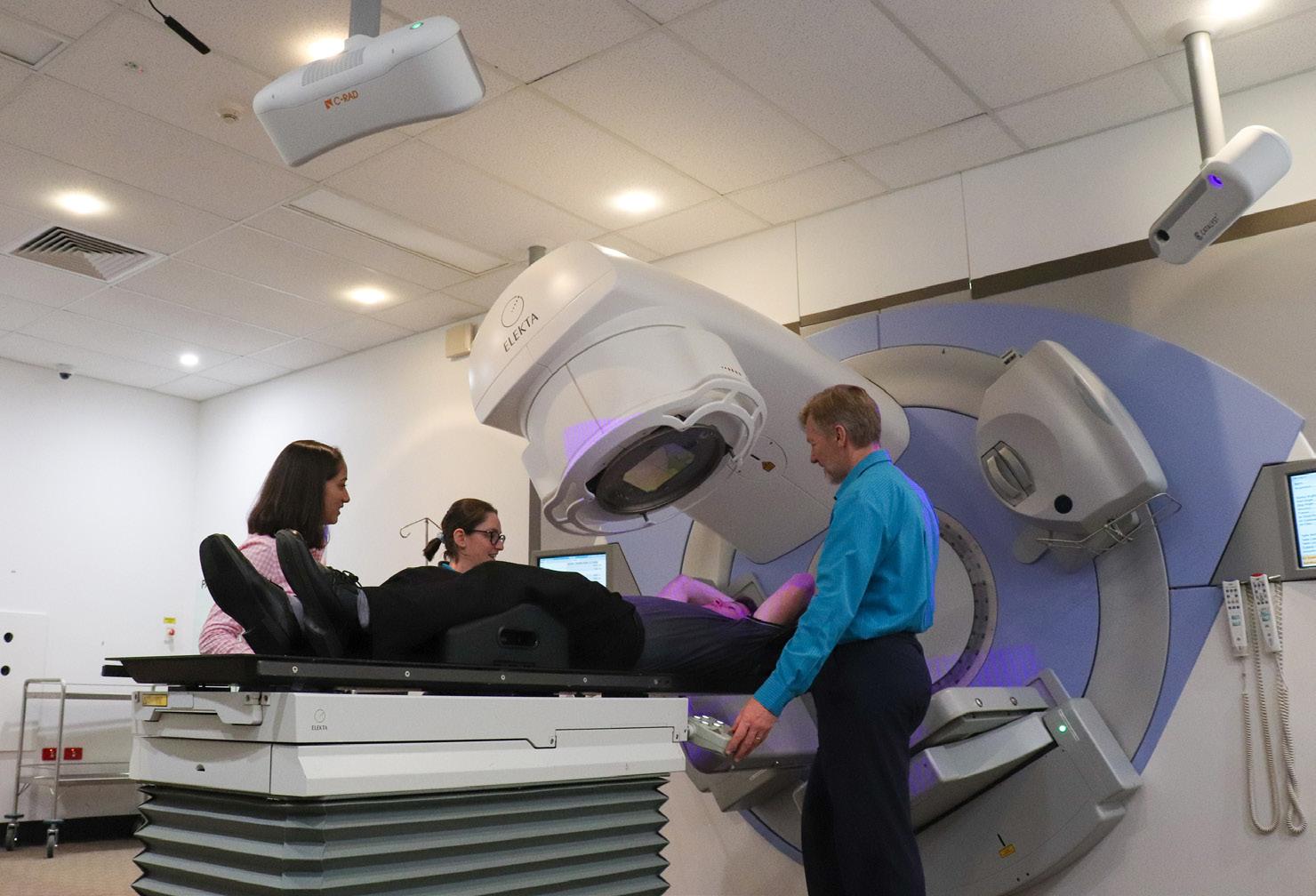Radiotherapy for skin cancer – an overview by Dr Shreya Armstrong Epidemiology Skin cancer accounts for the largest number of cancers diagnosed in Australia each year, with more non melanoma skin cancer (NMSC) diagnosed each year than all cancers combined1. The common NMSCs include4 basal cell carcinoma (BCC) and squamous cell carcinoma (SCC), with 35% increase in age standardized incidence of BCC and double the incidence of SCC from 1985 to 2002. Rarer NMSCs include but are not limited to Merkel cell carcinoma and dermatofibrosarcoma, with 900 new cases diagnosed in Australia in 2016, accounting for 0.7% of all cancers diagnosed. Australia also has the world’s second highest incidence of melanoma, with 35 new cases a year per 100,000
Figure 1 (above)
are aggressive neuroendocrine tumours with high propensity for regional and distant metastases. MCCs are exquisitely radiosensitive, with two meta-analyses confirming the benefit of adjuvant radiotherapy, which is associated with significant improvement in locoregional control and overall survival compared to surgery alone. MCC may also be managed with definitive radiotherapy alone, with reported in-field control rate of 75%8. For melanoma, adjuvant radiotherapy may be considered for patients at high risk of local or regional recurrence. Randomised evidence has shown the addition of adjuvant radiotherapy for tumours with high risk features is associated with a statistically significant reduction in locoregional relapse9.
people, accounting for 10% of all cancers diagnosed1. Treatment Options for Skin Cancer The treatment options available for skin cancer includes topical therapies, surgery, radiation therapy, systemic therapy (including chemotherapy, immunotherapy and/or targeted therapy), either alone or in combination. The ultimate choice of treatment depends on the tumour type, tumour extent, patient fitness and patient preference. Radiotherapy for Skin Cancer For NMSCs, radiotherapy can be used as
20 | NorDocs
the sole definitive treatment modality, or in the adjuvant setting for tumours with high risk features to reduce the risk of local recurrence (see table below). Definitive radiotherapy may be considered for patients who are not a surgical candidate, present with an inoperable lesion, or where excision would produce loss of function or unacceptable cosmesis. Randomised data comparing different treatment modalities are lacking, however large series data report local control rates with radiotherapy in the order of 90-95% and excellent or good cosmesis in >90% of patients3-7. Merkel cell carcinomas (MCCs)
Indications for post-operative radiotherapy for NMSCs (adapted from eviQ)2 Absolute • T4 disease • Positive margins, where further surgery not feasible • Large nerve perineural spread • Recurrent disease Relative (consider when 2 or more present) • T2 or T3 • Poorly differentiated






















